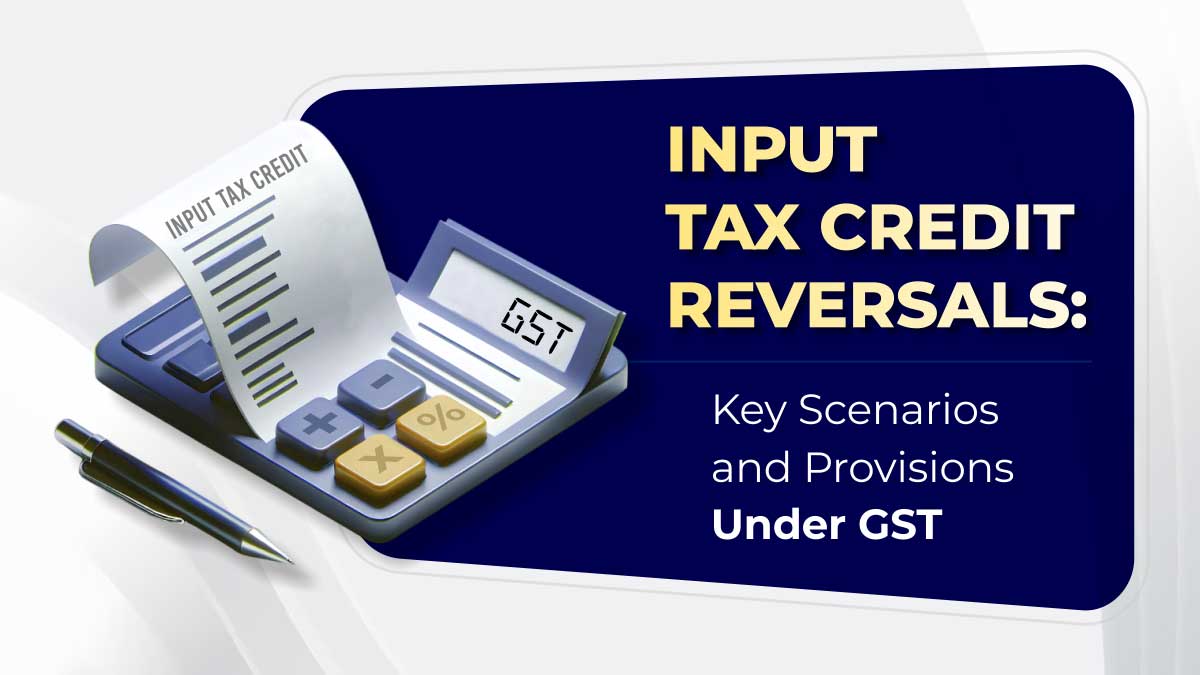
Understanding the complexities of the Goods and Services Tax (GST) system is crucial for businesses looking to optimize their tax liabilities compliances. One of the key areas that require attention is the Input Tax Credit (ITC) and its potential reversals. Under GST, the framework for reversing ITC is more comprehensive than that of previous tax regimes like CENVAT. In this blog post, we’ll explore the various scenarios that necessitate the reversal of ITC and the associated provisions under GST.
Reversal of ITC Due to Non-Payment of Consideration Within 180 Days
One of the most common scenarios for ITC reversal occurs when a registered person fails to make payment for goods or services within 180 days from the invoice date. Here’s how this works:
Condition for Reversal: If a business has availed of ITC on a purchase but does not pay the supplier within the stipulated time frame, it must reverse the credit previously claimed.
Inter-branch Transactions: In cases where goods or services are supplied between registered branches of the same company (having the same PAN), the law deems that payment has been made. Therefore, no actual funds need to flow between branches for this provision to apply.
Impact on liabilities: The amount required to reverse shall be reversed through reversal of ITC in GSTR-3B.
Interest Liability: Businesses must also pay interest on the reversed ITC, calculated from the date of credit availed until the date of reversal of ITC.
Re-availed Credit: Importantly, if a business reverses credit due to non-payment, it can re-avail the credit later if the payment is made after 180 days, without any time limit on re-claiming.
Reversal of Common ITC on a Proportionate Basis
GST categorizes ITC into several types based on how the purchased goods or services are used. This categorization determines how ITC reversals are handled, especially when common inputs are used for both taxable and exempt supplies.
Categories of ITC:
Exclusive Non-Business Use: ITC for goods or services used for personal purposes is not available.
Exempt Supplies: ITC cannot be claimed for supplies that are exempt from GST.
Ineligible Credits: Certain inputs, like restaurant services, are explicitly disallowed under Section 17(5) of the CGST Act.
Taxable Supplies: ITC is fully available for supplies that are taxable.
Common Credits: For supplies used for both taxable as well as exempted activities, ITC of such supplies must be reversed on a proportionate basis.
Reversal Mechanism: Each month, businesses must calculate their taxable and exempt supplies to determine the proportion of ITC that should be reversed. For instance, if a business has common credits of ₹1,000, and 25% of its turnover is exempt, it must reverse ₹250 of the ITC.
Annual Reconciliation: At the end of the financial year, businesses must reconcile the total exempted and taxable turnover to ensure that any excess reversal can be re-claim ITC on or before 30th September following the end of FY. At the same time, any shortfall will require payment of the difference with interest from 1st April of the succeeding FY till the date of payment.
Deemed Reversal of Common ITC for Non-Business Activity
If a common ITC is utilized for non-business purposes (like personal use), a deemed reversal of 5% of the total common ITC is required. However, if a business can substantiate that the ITC was never used for non-business activities, this reversal can be avoided. This provision ensures that personal consumption does not inadvertently benefit from business tax credits.
Reversal of ITC on Capital Goods
The treatment of ITC related to capital goods is another area where businesses must be vigilant. Capital goods may be used for both taxable and exempt supplies, and their ITC will also require proportionate reversal.
Categories of Capital Goods:
- Exclusive Exempt Use: ITC cannot be claimed.
- Exclusive Taxable Use: ITC is fully available.
Common Use: ITC must be reversed on a proportionate basis in the proportion of taxable and exempt supplies.
Mechanism for Reversal:
Businesses should maintain a detailed list of capital goods used for both taxable and exempted supplies.
The ITC on these goods can be claimed fully initially, but proportionate reversal will occur monthly basis in proportion of exempted and taxable turnover.
Over a period of 60 months (the estimated life of capital goods), 1/60th of the ITC must be reversed each month based on the proportion of exempted supplies.
Conclusion
Keeping track of the rules surrounding Input Tax Credit reversals under GST is essential for maintaining compliance and optimizing tax liabilities. From ensuring timely payments to accurately categorizing supplies, businesses must be proactive in managing their ITC claims. By understanding the various scenarios that necessitate ITC reversals, companies can avoid unnecessary tax liabilities and leverage these provisions to enhance their financial performance.
